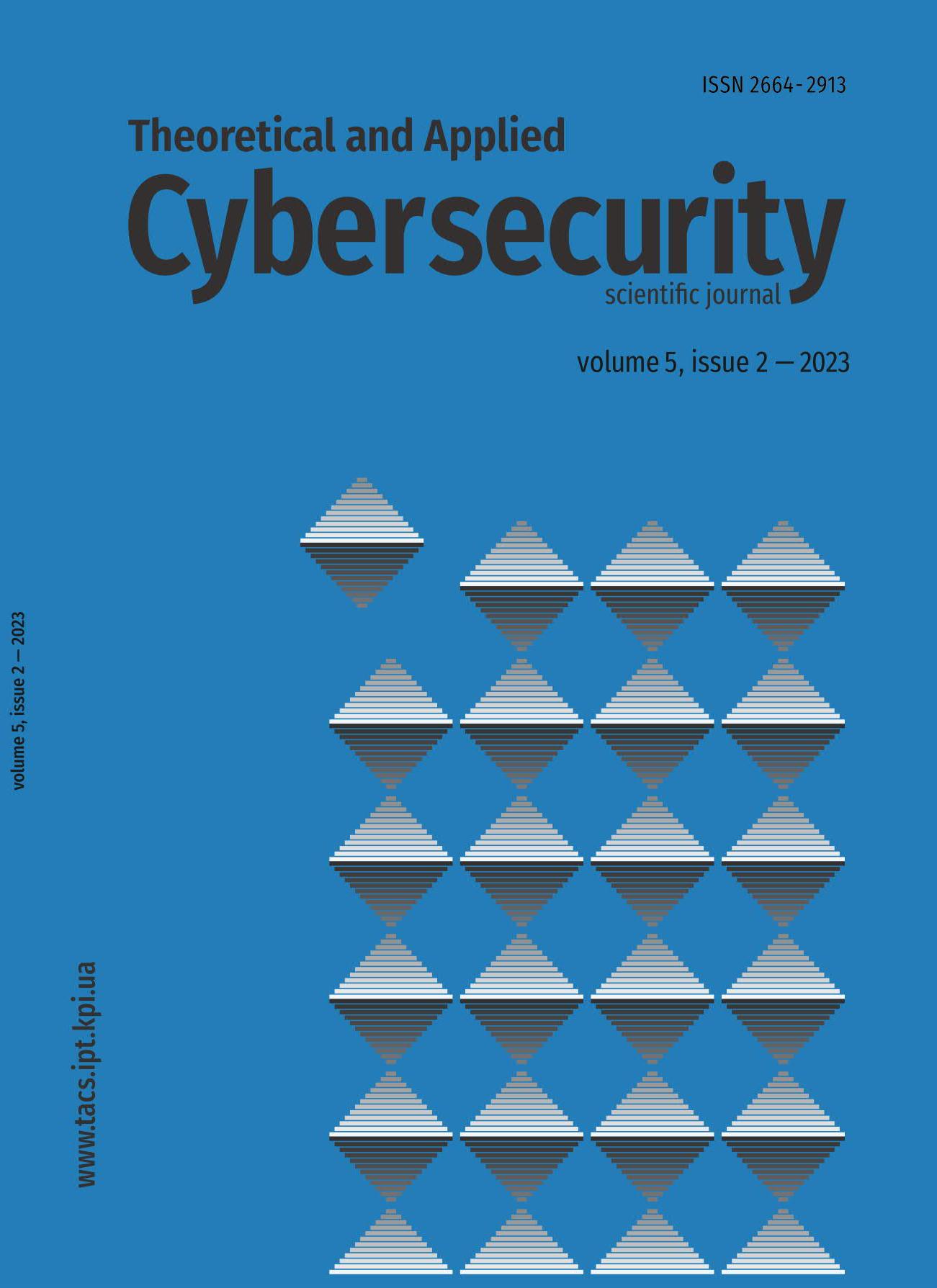Malware detection system based on static and dynamic analysis and using machine learning
DOI:
https://doi.org/10.20535/tacs.2664-29132023.2.277959Abstract
Cyber wars and cyber attacks are an urgent problem in the global digital environment. Based on existing popular detection methods, malware authors are creating ever more advanced and sophisticated malware. Therefore, this study aims to create a malware analysis system that uses both dynamic and static analysis. Our system is based on a machine learning method - support vector machine. The set of data used was collected from various Internet sources. It consists of 257 executable files in .exe format, 178 of which are malicious and 79 are benign. We use 5 different types of data representation: binary information, trace instructions, control flow graph, information obtained from the dynamic operation of the file, and file metadata. Then, using multiple kernel learning, we combine all data views and create one summative machine learning model.
Downloads
Published
Issue
Section
License
Authors who publish with this journal agree to the following terms:
Authors retain copyright and grant the journal right of first publication with the work simultaneously licensed under a Creative Commons Attribution License that allows others to share the work with an acknowledgement of the work's authorship and initial publication in this journal.
Authors are able to enter into separate, additional contractual arrangements for the non-exclusive distribution of the journal's published version of the work (e.g., post it to an institutional repository or publish it in a book), with an acknowledgement of its initial publication in this journal.
- Authors are permitted and encouraged to post their work online (e.g., in institutional repositories or on their website) prior to and during the submission process, as it can lead to productive exchanges, as well as earlier and greater citation of published work (See The Effect of Open Access).

